David Michael Williams's Blog: One Million Words (or less), page 6
July 13, 2020
Time to create a true outline

In case you missed any:
Step 0: Come up with an idea worth writing about
Step 1: Write a one-sentence summary of your novel
Step 2: Expand the single sentence into a full paragraph
Step 3: Create your main characters
Step 4: Expand each sentence of the summary into a full paragraph
Step 5: Hear your characters’ stories in their own words
Step 6: Transform your one-page summary into a true synopsis
Step 7: Make sure your main characters cast a shadow
Steps 8 & 9 of the Snowflake Method
The penultimate steps of the Snowflake Method can be summed up in a single word: outline.
It’s a task that many authors dread and more than a few novelists disregard altogether.
Anyone who has talked with me about this topic—or attended any of my “Pantsers vs. Plotters” presentations or read this blog post—knows I am a converted, die-hard plotter. I’ve personally found that having an outline, any outline, is better than none when it comes to both quality and efficiency of writing a first draft.
Not to mention future drafts…
Earlier phases of the Snowflake method chipped away at the iceberg-sized challenge that creating a novel outline can be, which put me in great shape for Steps 8 and 9: a scene by scene, chapter by chapter account of the story from beginning, through the middle, all the way to the end.
What Randy recommends
I took these notes from Mr. Ingermanson’s article about the Snowflake Method:
Step 8: Outline all scenes in a spreadsheet.
POV character
Plot (what happens)
Predicted number of pages
Total time: ???
Step 9: Draft narrative description of each scene in a text file.
Take each line of the spreadsheet and expand it into a multi-paragraph description of the scene.
Put in any cool lines of dialogue you think of and sketch out essential conflict of that scene.
Note: there should always be conflict in a scene!
One or two pages per scene
The result is, essentially, a full synopsis.
Total time: one week
(This step is optional.)
What David did
The exact opposite of the above.
Let me explain.
When I saw that Step 8 involved a spreadsheet, I was intrigued—and even a little excited. I might be one of the few fiction writers on the planet who loves organizing anything and everything in Microsoft Excel. I was also relieved to see that my old method for creating outlines contained two of the three recommended components: point-of-view character and plot.
I never bothered planning out a page count per scene or chapter, but I was willing to give that a shot. And I did. Just not very effectively in Excel.
The spreadsheet simply didn’t work for me because as soon as I started charting my plot points, the cells and rows became incredibly unruly. And cutting and pasting sentences—when I needed to move something from one scene to another or remove it altogether—was a pain. I tried giving each plot point its own column, but that only made it messier.
I was relieved when it came time to revert back to my preferred method of outlining: stacking my scenes chronologically/vertically in a plain ol’ Word doc.
Which, according to the Snowflake Method, is Step 9—and optional.
In truth, my Step-8-and-9 hybrid was more like cherry picking what I already knew worked for me with a little tweak. Instead of predicting the number of pages each scene would encompass, I used wordcount instead. This essentially equated to chapters with one long scene (e.g. 1,500 words), one long scene and one short scene (e.g. 900 and 600 words), or two scenes of roughly the same length (e.g. 7,500 and 7,500 words).
While Mr. Ingermanson didn’t provide a time estimate for the spreadsheet, he noted that the more detailed outline took him about a week to complete. I knocked out Step 8 in 4.5 hours; Step 9 in 4.75 hours.
(Full disclosure: I also spent some time in between addressing some of the characters’ backstories and attended to additional worldbuilding “research.”)
Below is an excerpt of my outline:
SPOILERS AHEAD
CHAPTER 1 (Scene 1)
POV: Asher (as the GM)
Epigraph: LARP
Word count: 1,200
Sir Larpsalot, Elvish Presley, Brutus the Bullheaded, Master Prospero, and Tom Foolery are betrayed by their traveling companion, who reveals himself to be the dreaded Lord of the Rangs.
The villain’s first attack misses and he raises his hands in surrender. Sir Larpsalot stays his sword, but the magical boomerang returns, striking the paragon down.
An epic battle unfolds, but the scene is cut short when Brutus and Tom run into each other and the latter twists his ankle.
CHAPTER 1 (Scene 2)
POV: Asher
Epigraph: N/A
Word count: 300
The action stops suddenly, and the kids break character.
The FINAL step
Looking back, it took me four months total to get through the first 9 steps of the Snowflake Method (with a few other projects mixed in). Finally, it was time to write the first draft of The Lost Tale of Sir Larpsalot.
Come back next month to see how it went—and whether using the Snowflake Method for this book proved to be a benefit or a blunder.
The post Time to create a true outline appeared first on David Michael Williams.
June 9, 2020
Make sure your main characters cast a shadow
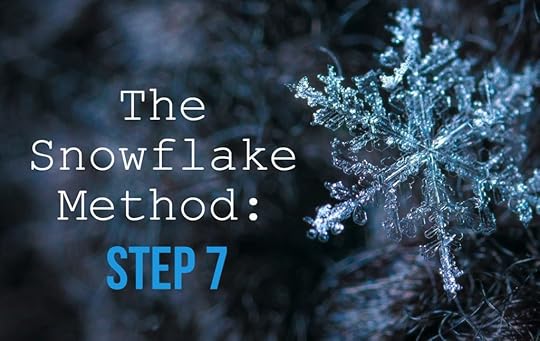
Step 7 of the Snowflake Method
In case you missed it:
Step 0: Come up with an idea worth writing about
Step 1: Write a one-sentence summary of your novel
Step 2: Expand the single sentence into a full paragraph
Step 3: Create your main characters
Step 4: Expand each sentence of the summary into a full paragraph
Step 5: Hear your characters’ stories in their own words
Step 6: Transform your one-page summary into a true synopsis
Before I became a writer, I was a chronic character creator.
For reasons beyond my understanding, my brain likes inventing personas—everything from silly facades to keep small children entertained to personalities projected onto passersby. Everyone has a story, after all.
Sometimes all it takes is seeing or hearing a name, and my mind begins to wander.
The stories about these made-up people can range from a single sentiment to several minutes of daydreaming. Sometimes these faint figures come back, appearing in future reveries or becoming a stronger presence in their own story snippets.
If one returns often enough, the formally flat figure starts to take shape and gain dimension. Maybe the could-be character can fit into a plot I’ve been pondering for a while. Or perhaps he/she/they are worthy enough to star in their own feature.
Something along those lines happened for my current work in progress, which I’ve been detailing in this ongoing Snowflake Method series. The name “Sir Larpsalot” randomly popped into my head one day.
Who is he? Who are his allies? Who are his enemies? What if he…?
Step 7 of the Snowflake Method centers on digging even deeper into the story’s main characters. Since I’ve been thinking about this questionable knight since Day 1, I was more than ready to roll up my sleeves give him—and his company—some depth.
What Randy recommends
I took these notes from Mr. Ingermanson’s article about the Snowflake Method:
Step 7: Expand character descriptions into full-fledged character charts detailing everything there is to know about them.
Birthdate
Description
History
Motivation
Goal
How the character changes by the end of the novel
Total time: one week
What David did
As noted above and in other blog posts (How to make a person), creating characters is one of my favorite parts of writing fiction. For most of my books, I go through an exhaustive list of questions so that I get to know my protagonists and antagonists inside and out.
The six suggested attributes in the bulleted list seemed woefully incomplete to me, so I scanned through the categories I typically cover while drafting full-blown character profiles and added a few of them to my customized character chart.
I’ll share one of them—the titular character’s—below, but before I do that, I want to touch on the timeframe. While most steps of the Snowflake Method have taken me less time than prescribed, this one took me not one week, but three. However, after looking through my notes, I realize that I completed this exercise in fits and starts in between several writing-related events and publishing a novel (If Dreams Can Die).
The total time spent on Step 7 came to 8.25 hours, about one hour per chart.
SPOILERS AHEAD (though some details have already changed)
Lorenzo / Sir Larpsalot
Full name: Lorenzo Lopez
Nick name: Lopez
Gender: male
Race/ethnicity: Hispanic (Mexican descent)
Religion: Catholic, nonpracticing
Physical description:
Hair: brown, shaggy
Eyes: brown
Height: average (5’4″)
Weight: average build (105 lbs.)
Other characteristics of note: faint hint of a mustache
Clothing/style:
In RL: T-shirts, athletic shorts
While larping: football pads, football helmet, backpack with Mountain Dew bottles, D&D manuals, trashcan lid, wooden sword, jackknife, homemade cape
Larping persona: Sir Larpsalot
Race: human
Class: paragon (paladin)
Physical traits: tall, muscular, handsome, bearded
Weapon(s): a holy longsword (Excaliburnt) and his (fictional) father’s shield
Gear/item(s) of note: platinum full-plate, elixirs of stamina
Birthday: May 28, 2006 (Gemini)
Age: 14
Family: Luis (father), Andrea (mother), Leonardo “Leo” (older brother, 17)
History: Lorenzo is a third-generation Mexican American; he speaks a little Spanish, though not as much as his parents would like. He has lived in Fond du Lac his entire life and has been best friends with Asher since third grade.
Habits/quirks: speaks in clichés when larping
Hobbies: Larping, reading comic books/fantasy novels, talking about the same, video games, Chess Club
Favorite books, movies, music, etc.: Dragonlance novels (his dad’s), Marvel movies, dubstep
Flaws: can be bossy in and out of character, unhappy when others don’t get along, high school anxiety
Secret(s): devastated that his best friend is moving away and worries about Good Company’s fate
Motivation: keep the gang together and avoid change for as long as possible
Goal: rescue Asher and maybe get the girl (like a “true hero”)
How he changes by the end of the novel: learns mercy doesn’t make him weak; no need to fear the future
The next step
Step 8 of the Snowflake Method involves mapping out every scene using a spreadsheet. Well, I’m a diehard plotter, and I use Excel for organizing everything. What could possibly go wrong?
You’ll see…
The post Make sure your main characters cast a shadow appeared first on David Michael Williams.
May 12, 2020
Surviving a novel synopsis

Step 6 of the Snowflake Method
In case you missed it:
Step 0: Come up with an idea worth writing about
Step 1: Write a one-sentence summary of your novel
Step 2: Expand the single sentence into a full paragraph
Step 3: Create your main characters
Step 4: Expand each sentence of the summary into a full paragraph
Step 5: Hear your characters’ stories in their own words
If you haven’t been following this series of posts (see above), this one might not make much sense.
To make a long story short, I decided to employ a scientific—or, at least, procedural—system called the Snowflake Method for producing my next novel, a YA portal fantasy tentatively titled Sir Larpsalot.
So far, the steps have bounced back and forth between plot development and character design, with Step 6 landing firmly in the former category. For this phase, I found myself face to face with that most odious and onerous of literary formats:
The synopsis.
What Randy recommends
I took these notes from Mr. Ingermanson’s article about the Snowflake Method:
Step 6: Expand the one-page plot summary of the novel into a four-page synopsis.
Expand each paragraph into a full page.
This will figure out the high-level logic of the story and help make strategic decisions.
Refer back to earlier documents to gain insight into the story.
Be receptive to new ideas.
Total time: one week
What David did
Normally, sitting down to write a four-page synopsis for an unwritten novel is no easy task. I think most authors would rather jump into writing Chapter 1 than composing this Frankenstein’s monster of a half-summary, half-outline.
However, since I was working off the one-page outline I created in Step 4, it wasn’t as difficult as I feared. In fact, expanding the high-level overview into a more detailed narrative was far easier than taking a finished novel and trying to whittle it down into key plot points—which is how I approached it in the past.
Because of the constraints of the assignment, I didn’t have to worry about getting lost in the weeds. I just needed to come up with enough words to fill four pages. I found that I had a firmer grasp on the beginning than the middle, and aspects of the ending remained nebulous. Still, it was pretty darn satisfying to see the story grow in terms of depth.
And, yes, new ideas bloomed along the way.
I felt like I had some holes that needed filling when I was finished. For example, “Their return to Idelle’s cottage is uneventful” wouldn’t make for a very compelling chapter. But adding the meat to the story’s one-page skeleton helped me see more clearly where additional muscle was needed.
It was a wild ride, but to my surprise, I actually thrived.
I won’t post the entire synopsis here, but perhaps it’s worthwhile to show a portion of the exercise, specifically how the first few scenes evolved from a paragraph into a full page.
SPOILERS AHEAD
The first paragraph from Step 4:
Lorenzo, Asher, Makayla, Jon, and Trent play what is meant to be the final episode of their long-running LARP campaign. As Sir Larpsalot, Elvish Presley, Brutus the Bullheaded, Master Prospero, and Tom Foolery (respectively), they battle the “big bad.” Sir Larpsalot is tricked, and the party loses the upper hand. Shortly thereafter, Trent twists his ankle, and they are forced to end their session. An argument about the future of the group—given Asher’s impending move and the start of high school around the corner—breaks out. Everyone goes their separate ways.
The first page of Step 6:
Sir Larpsalot, Elvish Presley, Brutus the Bullheaded, Master Prospero, and Tom Foolery are betrayed by their traveling companion, who reveals himself to be the dreaded Lord of the Rangs. The villain’s first attack misses, and he raises his hands in surrender. Sir Larpsalot stays his sword, but the magical boomerang returns, striking the paragon down.
An epic battle unfolds, but the scene is cut short when Brutus and Tom (Mak and Trent) run into each other and the latter twists his ankle.
The action stops suddenly, and the kids break character. Trent is mad at Mak, though she is angry with their merciful party leader (Lorenzo). Jon tries to take command (for the umpteenth time), but Trent shuts it all down by reminding them that this is their last adventure. He’s not interested in rescheduling the final battle because he’s done with larping. Even if Asher weren’t moving away, he’d want to quit before they start high school in a couple of weeks.
Trent storms/limps off, and Jon reluctantly joins him. Asher is sad that his masterpiece fell apart; he doesn’t know how to feel about learning his friends won’t larp—and that the characters will, in essence, die—after he leaves. Lorenzo and Mak offer to stick around and help Asher clean up, but he wants to be alone.
The next step
Regarding the timeline, it did, in fact, take me the prescribed week to complete this step, working from 5/1/19 to 5/7/19. Wow, that was almost exactly a year ago!
Since then, I’ve completed the remaining four steps of the Snowflake Method, did a round of edits on the rough draft, received feedback from my young beta readers, made more revisions, and sent the book out for a second round of beta (gamma?) reading, this time from older readers.
I’ll continue to summarize the steps of this experiment in the months to come, but suffice it to say, I’m pleased with my progress.
Do I attribute my success to the Snowflake Method?
You’ll just have to wait and see, continuing next month when I take on Step 7: creating full-fledged character charts.
The post Surviving a novel synopsis appeared first on David Michael Williams.
April 14, 2020
Magic’s Daughter conjures up family conflict, intrigue and a dash of romance
My new YA fantasy novel is available now!
Escape for a spell with my newly released novel, Magic’s Daughter, a coming-of-age story set in the fantasy world of Altaerra.
If you’ve already read The Renegade Chronicles, you’ll feel right at home with Selena Nelesti, a young aristocrat grappling with the dangers of magic in the days before the Renegade War.
If you haven’t read The Renegade Chronicles, don’t worry: Magic’s Daughter is a standalone story and can be enjoyed as an independent entryway into my magical, medieval world.
If you like fantasy, YA fiction, and/or smart stories with heart, give Magic’s Daughter a try!
The paperback and Kindle editions are available now at Amazon.com. Additional e-book editions as well as an audiobook version are slated for later in 2020.
The blurb:
A black sheep in red robes
Selena Nelesti wants nothing to do with her noble name.
While her mother schemes to find her a highborn husband, young Selena loses herself in her studies, learning about the villains and heroes who helped shape the world.
But ancient history cannot fix her future. To destroy the shackles of duty and forge her own path, she must seek out new knowledge—forbidden knowledge.
All magic requires sacrifice, however, and if Selena is not careful, it may consume her completely.
Key characters:
Selena Nelesti
The youngest daughter of a prosperous duke, Selena has everything she could ever want—except the chance to be more. She’s smart, stubborn, and, at times, self-centered.
Godfrey Nelesti
Duke Godfrey Nelesti is a pivotal player in the controversial Alliance of Nations treaty. But is it the stress of politics or something else that causes him to withdraw from Selena?
Charlotte Nelesti
The only thing Selena and her mother seem to have in common is their red hair. Then again, Charlotte has a secret of her own, one that could destroy the Nelesti family.
Williard O’Camber
Selena’s uncle—her mother’s twin brother—is more than a little rough around the edges. His unexpected visit triggers a chain of events that effects Selena’s past, present, and future.
Celeste Nelesti
Selena has always been close to her grandmother, whose stories and advice she cherishes. However, an ailment of the mind threatens to rob her of both.
Father Briarbridge
A devout priest of Pintor, Sebastian Briarbridge serves as Castle Nelesti’s confessor and Selena’s personal tutor—much to the young woman’s chagrin.
Lucas Thorne
Selena sneaks out at night to visit the castle’s stable boy, who gives her glimpses of the outside world. Her forbidden friendship with Lucas is exciting, especially when it starts to become something more.
Latimer Lanthrope
A foppish wizard from the Assembly of Magic, Latimer wields powerful spells and a devil-may-care attitude that Selena finds equally enthralling—and equally dangerous.
Learn more:
Magic’s Daughter Q&A
Buy the book:
Order the paperback from Amazon.com
Download for Kindle
The post Magic’s Daughter conjures up family conflict, intrigue and a dash of romance appeared first on David Michael Williams.
March 3, 2020
Hear your characters’ stories in their own words
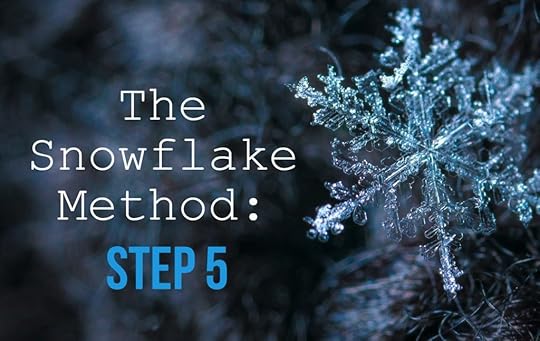
Step 5 of the Snowflake Method
Sometimes hearing voices can be a good thing.
Authors often struggle with making their characters more than two-dimensional figures or, worse, just names on a page. Sure, physical descriptions and actions—such as a nervous habit or a peculiar hobby—can add dimension, but one of the best ways to differentiate one character from another is by giving each his/her own voice.
When a character has a distinct voice, the reader might not even need “Adelaide said” or “Zeb asked” because the words, phrasing, and cadence of the dialogue will speak volumes.
What does any of this have to do with the Snowflake Method? Read on!
What Randy recommends
I took these notes from Mr. Ingermanson’s article about the Snowflake Method:
Step 5: Write a one-page description for each major character and a half-page description for other important characters.
Each character synopsis tells the story from the point of view of each character.
Total time: “a day or two”
What David did
When I first read that, I thought, “You’re asking me to write the same story five different times? Great.”
In the name of science, I followed the instructions and discovered quite a bit of value in this exercise. As alluded to above, it forced me to think about voice very early on. Since each of the starring teens was telling his/her story, I had to decide on vocabulary, sentence structure, and so forth.
It certainly helped me to get to know my main characters better than I did before.
And interestingly enough, I didn’t end up with five identical stories. While each protagonist covered the same main plot points, their individual accounts focused on disparate aspects of their adventure. Better yet, these first-person journal-like entries pumped emotion into the tale.
My half-page descriptions for two additional characters—a key side character and the villain—forced to me flush out more details surrounding the main conflict. Sometimes character motivations can get muddy while writing a rough draft; Step 5 helped me map out who is doing what, when, and why.
To my surprise and satisfaction, I completed the exercise in less than five hours.
Rather than publish all six pages of output here, I’ll instead share the first paragraph for each of the five protagonists. That should be enough to illustrate not only my overall approach, but also the subtle variety in voices.
SPOILERS AHEAD
Lorenzo Lopez / Sir Larpsalot
I’m fully in character when our supposed patron reveals himself to be the big bad: The Lord of the Rangs. I trusted him, so it’s on me. We hold our own against his enchanted boomerangs, but Brutus and Tom Foolery collide. Trent calls timeout because he twisted his ankle. He’s pissed at Mak, and she’s pissed at me because I, the party leader, led us into a trap. She says I’m too weak. Right on cue, Jon throws out an I-told-ya-so and volunteers to take my place. Before Asher can calm everyone down, Trent reminds us all that it doesn’t matter. This is our last adventure. I try to find a time we can reconvene before Asher moves away, but Trent says he’s done. As with the big bad, I’m helpless to stop him—and his brother—from leaving.
Asher Brzezinski / Elvish Presley
This final larp is meant to be my masterpiece, but it all falls apart when Trent tweaks his ankle and everyone starts arguing. They start talking about whether they will continue to larp when I’m gone. I’m not sure whether to be glad they aren’t replacing me as GM or sad that these characters are officially sidelined. I’d be willing to find some time for The Final Battle before we leave on Saturday, but Trent is done. So much for a happy ending. Trent and Jon leave, but Lorenzo and Mak stick around. It’s awkward. Mak offers to help me clean up, but I turn her down. I just want to be alone.
Makayla Schmidt / Brutus the Bullheaded
I hate today. It’s our last larp, and when we’re done, I have to say goodbye to Asher. Of course, Trent ruins it by running into me and spraining his ankle. Even though I’m not really mad at any of them, I yell at Lorenzo for not killing the Lord of the Rangs when he had the chance. Then Jon and Trent and Lorenzo are arguing about whether we’re going to hang out anymore. Seems like I’m losing all my friends today. Trent and Jon leave, but I stick around until Lorenzo leaves. I don’t have the guts to tell Asher how I feel about him.
Jonathan Hawthorne / Master Prospero
When the Lord of the Rangs shows his true colors, I’m not at all surprised. Asher knows how to tell a story, sure, but I’ve read so many fantasy stories that very little catches me off guard. I tried to warn Sir Larpsalot, but he never listens. Alas. It’ll be a glorious climax, and I’m prepared to unleash my highest-level spell. Tom Foolery and Brutus the Bullheaded are less formidable, however, and they collide. Because Trent hurt his ankle, we have to stop. It’s disappointing. Worse, everyone starts arguing, and it becomes crystal clear that Trent is intent on disbanding Good Company—even though I could easily take over the role of GM after Asher leaves. Trent storms off, so I follow. Mom says we have to stick together.
Trent Hawthorne / Tom Foolery
To be honest, I have mixed feelings about our final romp in the woods. Yeah, it’s sad that it’s coming to an end, but we’re going to high school in a couple of weeks. It’s for the best. We should’ve stopped a while ago. But I know Jon needs this, and Lorenzo and Asher are excited, too. So then we’re fighting the Lord of the Rangs, and clumsy Mak runs into me. Game over. I’m done. We don’t have to finish the campaign. Real life doesn’t work that way, either.
The next step
Having gotten to hang out with my protagonists—and actually hear their voices—has me more excited than ever to start writing this book.
Too bad I still have five more steps to go in the Snowflake Method!
Next, I’ll take on Step 6: expanding the one-page plot synopsis into a four-page synopsis. It doesn’t sound particularly exciting. Is it even necessary? Find out in May!
(Why not next month? Let’s just say I have a special announcement reserved for April.)
In case you missed it
Step 0: Come up with an idea worth writing about
Step 1: Write a one-sentence summary of your novel
Step 2: Expand the single sentence into a full paragraph
Step 3: Create your main characters
Step 4: Expand each sentence of the summary into a full paragraph
The post Hear your characters’ stories in their own words appeared first on David Michael Williams.
February 4, 2020
A paragraph evolves into a page
Welcome back to my mad experiment, where I attempt to create a novel using a ten-step approach to plotting, character development, and more.
In case you missed the earlier installments:
Step 0: Come up with an idea worth writing about
Step 1: Write a one-sentence summary of your novel
Step 2: Expand the single sentence into a full paragraph
Step 3: Create your main characters
In Step 4, the single paragraph from Step 2 expands into a full page, with each sentence of the former becoming its own paragraph.
As the outline for the Sir Larpsalot book becomes more detailed, there is more potential for spoilers—although some of the decisions I made below have already been tweaked or outright reversed. Nevertheless, let it be known:
MAJOR SPOILERS AHEAD
What Randy recommends
I took these notes from Mr. Ingermanson’s article about the Snowflake Method:
Step 4: Expand each sentence of the summary paragraph into a full paragraph.
All but the last paragraph should end in a disaster.
The final paragraph should tell how the book ends.
Ends up being a one-page skeleton of the novel.
Total time: “several” hours
What David did
This was a pretty straightforward and natural step, and I immediately took to the task, eager to dig deeper into the guts of the story.
To my surprise, it took just over an hour to evolve this:
Five Wisconsin teens play a bittersweet LARP (live action role-playing) session, trying to wrap up a long campaign before the GM (game master) moves out of state. The next day, they learn that the GM is missing, go looking for him in the familiar woods, and get pulled through a portal into a stereotypical fantasy world. The princess there tells them they must retrieve a powerful relic from a mighty avian wizard to save the GM and the realm. They barely escape with the relic and their lives, only to discover the princess is an evil sorceress and the true captor of the GM. With the help of the avian wizard, they defeat the sorceress, rescue the GM, and return home.
…into this:
Lorenzo, Asher, Makayla, Jon, and Trent play what is meant to be the final episode of their long-running LARP campaign. As Sir Larpsalot, Elvish Presley, Brutus the Bullheaded, Master Prospero, and Tom Foolery (respectively), they battle the “big bad.” Sir Larpsalot is tricked, and the party loses the upper hand. Shortly thereafter, Trent twists his ankle, and they are forced to end their session. An argument about the future of the group—given Asher’s impending move and the start of high school around the corner—breaks out. Everyone goes their separate ways.
The next day, Lorenzo learns that Asher is missing. He and the other kids go to his house and learn from his mother that he had gone out to the woods to prepare for one last adventure but never returned. The gang continues to bicker (Mak thinks Lorenzo’s LARP gear is in bad taste), but fear gnaws at them all, except for Jon, who begins to suspect Asher staged the whole thing. When they can’t find Asher in the usual places, they wander to the dilapidated home of Old Man Magee. They don’t learn much from the crazy, short man, other than the fact that the cops tried to question him. On their way back to the Brzezinski property, a portal opens in a clearing, and the four are pulled inside.
When they wake up, they don’t immediately realize they’re in a different world, though they quickly get lost. As dusk descends, they decide to make camp, which is a lot harder in real life. Even as they argue about “first watch,” a small company of imps attacks. By sheer luck and the interference of external forces, they survive. Lorenzo catches a glimpse of a feathery figure, but it’s unclear whether he was a friend or foe. The more obvious savior is a beautiful woman who possesses “a mere modicum” of magic. She brings them to her home—a humble cottage—and explains the dire state of her world. Her magic has been sealed by an evil avian wizard, but if they can reclaim her relic from Wizard Hawk, she can help them find their missing friend and return them to their world.
The four teens reluctantly accept the sorceress’s quest. Lorenzo wants to prove himself a hero, Mak wants to save Asher, Jon wants to learn more about what’s happening, and Trent just wants to get back home. En route to where Wizard Hawk is rumored to live, they meet some colorful characters that speak in hushed whispers of the avian wizard: no one knows whether he is a cursed wizard or an enchanted bird. Eventually, they flounder their way to Wizard Hawk’s lair, almost splitting the party on the way. Despite a truce within their ranks, their plan for fighting Wizard Hawk quickly falls apart. The battle goes poorly from the start.
Working as a team, the four teens manage to turn the tides. Lorenzo has a chance to kill (or at least seriously wound) Wizard Hawk but stays his hand. The four adventures take the relic and run for their lives back to the cottage. They lie about Wizard Hawk’s death. During their celebration feast with the sorceress, they discover that she has had Asher in her possession the entire time and that she was the one who summoned them in the first place because she detected their magic across the planes. Instead of killing them, she throws Lorenzo and the others in the same cell as Asher; she suspects they’ll have their uses—especially after she reclaims her world and is ready to conquer the next.
Although all hope seems lost, Lorenzo rallies the party. He assures Asher that none of them blame him for their current predicament and proclaims that if they work together, they can do anything. They come up with a ruse, and Trent convinces the sorceress that he wants to serve her and abandon his pathetic compatriots. Once he’s out, he’s able to free the others. The final battle seems impossible, but with the help of Wizard Hawk, who swoops in to save the day, they defeat the sorceress. Afterward, Wizard Hawk reverts to human form—a human female form. She kisses Sir Larpsalot on the forehead but declines his invitation to return to Earth. She also predicts it will take a long time to figure out how to send them back. But then a familiar portal appears, and the five teens make their escape.
Back in the real world, they find Leon Magee in the clearing. He alludes to the fact that he’s visited other worlds and that maybe his presence is what caught the sorceress’s attention. As the teens make their way to Asher’s house, they swear to keep in touch no matter what the future brings. Mak surprises everyone by kissing Asher.
The next step
There’s something invigorating about discovering what events might happen between Point A and Point Z. Even though this one-page summary still is very rough and broad, my brain can’t help but begin to fill in even more holes.
Which will happen to some degree next month, when I move onto Step 5 of the Snowflake Method: telling the entire story from each main character’s point of view.
Until next month…
The post A paragraph evolves into a page appeared first on David Michael Williams.
January 7, 2020
Create your main characters
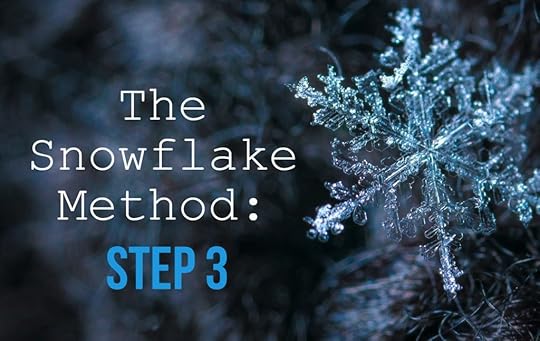
Step 3 of the Snowflake Method
A story cannot survive without strong people to populate it.
For me, a character often comes to mind before a scenario. But even when a premise for a plot pops into my head first, it’s almost always immediately followed by a character or two to set things in motion.
A personality trait or physical aspect comes next; later, snippets of dialogue from half-realized scenes.
Creating characters has always been my favorite aspect of storytelling, so when I saw that Step 3 of the Snowflake Method was making the major characters, I was eager to dive in. Since taking a stab at my first novel (Rebels and Fools) and up through this spring’s offering (Magic’s Daughter), I’ve always set aside time to explore my characters through various writing exercises before writing the first draft.
So how did the Snowflake Method’s approach to drafting character profiles differ from mine?
What Randy recommends
I took these notes from Mr. Ingermanson’s article about the Snowflake Method:
Step 3: Write a one-page summary for each major character.
Character’s name
One-sentence summary of the character’s storyline
The character’s motivation (abstract)
The character’s goal (concrete)
The character’s conflict (what prevents him/her from reaching his/her goal?)
The character’s epiphany (what will he/she learn? how will he/she change?)
A one-paragraph summary of the character’s storyline
Total time: 1 hour per character
What David did
My usual process for detailing characters touched on much of this, though I’ve never distinguished between concrete goals and abstract motivations or consciously assigned an epiphany for each main character. I understood that major characters should transform in between page one and the final word, so these things tended to happen organically.
The Snowflake Method made everything so much more…intentional.
Frankly, I found it kind of fun.
SPOILER ALERT
What follows contains spoilers for the not-yet-released (and not-yet-named) book about Sir Larpsalot and his friends. Details are likely to change before publication, but if you don’t want to risk spoilers, skip down to here!
Sir Larpsalot
Character’s name: Lorenzo Lopez
Nickname: none
Alter-ego: Sir Larpsalot (human paragon)
One-sentence summary of the character’s storyline:
Lorenzo fears growing up and, particularly, the changes high school will bring, but his quest will give him the self-confidence he needs to survive.
The character’s motivation: avoiding change by keeping the gang together as long as possible
The character’s goal: rescue his friend and maybe get the girl—like a “true hero”
The character’s conflict: the true perils of an adventure and the necessity of real violence (mercy vs. justice)
The character’s epiphany: mercy and vulnerability doesn’t make him weak; he has no need to fear the future
A one-paragraph summary of the character’s story:
Lorenzo is not looking forward to high school or the corresponding breakup of his larping band. When Asher goes missing, he’s secretly thrilled that he and his friends get to go on a fantasy adventure—until the very real dangers present themselves. While he tries to be chivalrous and play the role of a valorous knight, Lorenzo is plagued by self-doubt and fear that he will fail his friends. In the end, he finds his courage yet chooses mercy over victory when facing Wizard Hawk in battle. After surviving his otherworldly quest, high school seems far less scary, and he knows the bonds he’s forged with his fellow larpers will last a lifetime, even if time and distance pull them apart.
Elvish Presley
Character’s name: Asher Brzezinski
Nickname: Ash
Alter-ego: Elvish Presley (elven troubadour)
One-sentence summary of the character’s storyline:
Asher plans one final larp for his band before his family moves away, but when a portal pulls the storyteller into another world, he’s thrust into the role of “damsel in distress.”
The character’s motivation: creating an enjoyable experience for his friends despite the circumstances (i.e. leaving on a high note)
The character’s goal: escaping his treacherous captor
The character’s conflict: the worry that he betrayed his friends by bringing them into the adventure and that they may not be able to rescue him
The character’s epiphany: despite their differences, he has created an effective team; his friends will rescue him
A one-paragraph summary of the character’s story:
Asher sees himself as a pretty clever young man. However, when a portal opens and pulls him into a fantasy world, his words fail him, and he ends up the prisoner of a sorceress. He tries to explain his captor’s mistake to her—that the magic he and his friends wield is really just make-believe—but when that doesn’t work, he weaves a story about how the entire team must be gathered for their abilities to manifest. The sorceress does summon the rest of the larpers, but instead of reuniting Asher with the others, she uses him as leverage. He tries in vain to escape and realizes it’s up to his friends to rescue him. When the final battle unfolds, he plays his part in defeating the enemy.
Brutus the Bullheaded
Character’s name: Makayla Schmidt
Nickname: Mak
Alter-ego: Brutus the Bullheaded (minotaur berserker)
One-sentence summary of the character’s storyline:
Mak is used to be the toughest person in the room, yet her resolve is tested when faced with matters of life and death and forced to admit that sometimes a strong offense isn’t the best defense.
The character’s motivation: embracing her inner tomboy as Brutus the Bullheaded in a nonjudgmental environment
The character’s goal: not losing her cool while trying to save Asher
The character’s conflict: despite her badass act, Mak is as scared as anybody, but it’s easier to bury her true feelings (e.g. fear, affection, some girly tendencies) beneath a tough exterior
The character’s epiphany: true friends won’t judge you—not in the game and not in real life either
A one-paragraph summary of the character’s story:
Mak doesn’t get along with most of the girls at her school, and she can’t imagine high school will be much different. She’s become close with a group of guys and, despite getting crap for it, she feels more like herself when role-playing Brutus the Bullheaded than anywhere else. She does her best to stay in character while undertaking their other worldly adventure, but cracks in her proverbial armor inevitably appear. To her surprise, she feels even stronger after an emotional breakdown prior to the final battle. When they make it home safely, she even gives into the impulse to kiss Asher full on the lips.
Master Prospero
Character’s name: Jonathan Hawthorne
Nickname: Jon
Alter-ego: Master Prospero (human magus)
One-sentence summary of the character’s storyline:
Of the gang, Jon is least fazed by the existence of a fantasy world, and although his vast knowledge of tropes comes in handy, a big dose of humility will be needed to survive the experience.
The character’s motivation: showing off everything he knows and letting people know when they are wrong
The character’s goal: proving himself to be a better leader than Lorenzo
The character’s conflict: even though logical answers present themselves, he can’t seem to convince his compatriots to trust him
The character’s epiphany: sometimes unreasonable solutions can be as successful as rational ones (i.e. there’s more than one way to skin a sorceress), and there are more important things in life than being right
A one-paragraph summary of the character’s story:
A fan of fantasy books, movies, and television, Jon is best equipped to handle the trip into a real-life portal fantasy. He’s never missed a chance to question Lorenzo’s leadership, and this adventure is no exception. While he adds conflict to the team dynamic, he also comes up with solutions to many problems, using not only his knowledge of all things fantasy, but also outside-the-box substitutions for magic. His dissatisfaction with Lorenzo’s leadership nearly leads to a split in the group (with Jon’s brother feeling obligated to side with him), but in the end, he is forced to admit that they are stronger together than apart—and that he owes his friends much more than he ever realized.
Tom Foolery
Character’s name: Trent Hawthorne
Nickname: none
Alter-ego: Tom Foolery (dwarf clerogue)
One-sentence summary of the character’s storyline:
Trent feels he’s ready to leave larping behind and embrace the adventure of high school; he just has to survive the nightmarish quest first.
The character’s motivation: leaving behind childish things (and his brother) so that he can maybe get a girlfriend someday
The character’s goal: doing whatever it takes to get back to the real world (even if it means leaving Asher behind)
The character’s conflict: the others won’t leave without Asher, so he’s forced to play along with the dangerous game
The character’s epiphany: despite his sarcastic attitude, Lorenzo and the rest genuinely care about him; their friendships are worth preserving
A one-paragraph summary of the character’s story:
Trent begrudgingly finishes the larp campaign as a favor to his brother and the rest. Even if Asher weren’t moving away, he thinks high school is the perfect excuse to stop dressing up like a nerd. Of everyone in the gang, he’s the most upset by being transported to a fantasy world. Because the sorceress is hot, he’s willing to give it a go, though Jon and Lorenzo’s bickering grates at his nerves every step of the way. He fantasizes about ditching Jon, but when push comes to shove, he sides with this brother and brokers peace between the two factions. During the final battle, he fully embraces the ridiculousness of the situation and genuinely enjoys saving Asher’s butt.
The next step
Although many YA fantasy novels feature a single protagonist, mine will have five. Is that too many? Do all five party members need their own unique motivations? Will this prove too complex for the type of book it will be?
Time will tell—but only after I finish these planning exercises!
Next month, I’ll tackle Step 4 of the Snowflake Method: expanding the one-paragraph summary (from Step 2) into a full page.
In case you missed it:
Step 0: Come up with an idea worth writing about
Step 1: Write a one-sentence summary of your novel
Step 2: Expand the single sentence into a full paragraph
The post Create your main characters appeared first on David Michael Williams.
December 2, 2019
Outline your book in one paragraph
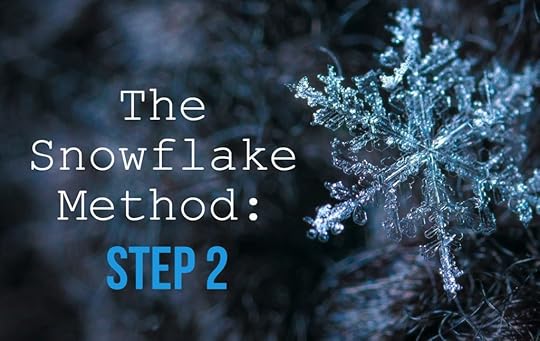
Step 2 of the Snowflake Method
Before I jump into Step 2, here are a couple of links in case you need to catch up:
Step 0
Step 1
What Randy recommends
These are the notes I took from Mr. Ingermanson’s article about the Snowflake Method:
Step 2: Expand the single sentence into a full paragraph.
Include the story setup, major disasters, and ending of the novel.
Consider having “three disasters plus an ending”/using the Three-Act structure.
Try to stick to no more than five sentences: intro, three disasters, conclusion.
This isn’t the back-cover copy, which summarizes only the first quarter of the story.
Total time: 1 hour
What David did
Step 2 seemed far easier than Step 1. Maybe it’s because I find building up easier than distilling down.
And yet I still found a reason (or two) to procrastinate between finishing the first step and starting the second.
I fretted about how word building was going to work
An excerpt from my notes:
I’m a little bit concerned about world building, which isn’t really covered by the Snowflake Method. There are, in fact, two fantasy worlds to consider in this novel: the fake fantasy world of [the larpers’] design and the real fantasy world the party winds up in. I’m OK with making the former somewhat generic—riffing off of popular D&D tropes.
But what about [the other] world?
If the “real” fantasy world is too akin to tabletop gaming, it will give the adventurers a distinct advantage on their quest. If, in fact, it’s more realistic than a swords-and-sorcery romp, that could add some tension. I suppose I’ll have to decide how high I want to set the stakes.
In other words: is this a straight-up comedy, or will there be true peril?
I researched larping
I scoured the internet for information about larping and joined a couple of Facebook groups to educate myself about the hobby. I also made a list of all the various larping events throughout Wisconsin, which is the setting of my book.
Then I watched some documentaries and videos about larping to get a better feel for the various ways people play.
I finally did the thing
As predicted, Step 2 was easier than Step 1, though it did take me the full hour to complete it. But before I share what I came up with…
SPOILER ALERT
What follows contains potential spoilers for the not-yet-released (and not-yet-named) book about Sir Larpsalot and his friends. Caveat: because this is all falls under the category of planning, details are bound to change along the way, so this step may actually include false spoilers!
Last chance to remain untainted…
You’re sure?
Alrighty, but first here’s the single-sentence summary in case you forgot:
Five teen larpers must become the fantasy warriors they pretend to be when a confused wizard summons them to complete an impossible quest in another world.
Which then becomes this paragraph:
Five Wisconsin teens play a bittersweet LARP (live action role-playing) session, trying to wrap up a long campaign before the GM (game master) moves out of state. The next day, they learn that the GM is missing, go looking for him in the familiar woods, and get pulled through a portal into a stereotypical fantasy world. The princess there tells them they must retrieve a powerful relic from a mighty avian wizard to save the GM and the realm. They barely escape with the relic and their lives, only to discover the princess is an evil sorceress and the true captor of the GM. With the help of the avian wizard, they defeat the sorceress, rescue the GM, and return home.
So did I meet the criteria of Step 2?
Include the story setup, major disasters, and ending of the novel.
Full plot arc? Check!
Consider having “three disasters plus an ending”/using the Three-Act structure.
Disaster 1 is losing their GM. Disaster 2 is facing the avian wizard in battle. Disaster 3 is being betrayed by the sorceress.
Try to stick to no more than five sentences: intro, three disasters, conclusion.
Check!
The next step
Step 3 of the Snowflake Method demands a one-page description for each of the main characters.
Be sure to check back in January so you can meet Sir Larpsalot, Elvish Presley, Brutus the Bullheaded, Master Prospero, and Tom Foolery!
The post Outline your book in one paragraph appeared first on David Michael Williams.
November 5, 2019
Tell your story in a single sentence
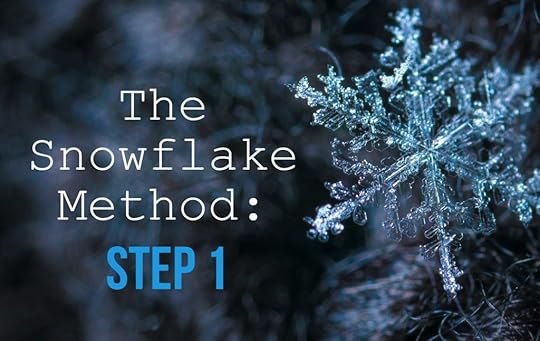
Step 1 of the Snowflake Method
If you missed last month’s blog post, here’s the TL;DR version:
I got pretty far planning a new standalone novel, but the project fizzled.
So I went back to an idea I had for a comic book (which had also fizzled).
After further consideration, I decided to expand upon that premise and pursue a YA novel starring Sir Larpsalot and his friends.
Then I stumbled upon Randy Ingermanson’s Snowflake Method for planning and writing novels and thought I’d give the process a shot.
What Randy recommends
Here’s an excerpt of the notes I jotted down while reading Mr. Ingermanson’s article about the Snowflake Method:
Step 1: Write a one-sentence summary of your novel.
Example: “A rogue physicist travels back in time to kill the apostle Paul.”
This will forever serve as a 10-second selling tool (e.g. elevator pitch, logline, etc.).
Shorter is better; try fewer than 15 words.
Tie together the big picture with a personal picture. Who stands to lose the most? What does he/she hope to win?
Total time: 1 hour
What David did
Before we get into what I did, let’s talk a little about what I thought.
One hour to come up with a single sentence summarizing an entire novel?
GULP!
For past projects, I’ve spent days whittling down a book into an appropriate back-cover blurb. Granted, blurbs aren’t identical to loglines. Nevertheless, I was already nervous going in because I knew how grueling it can be to boil down a bunch of amazing ideas into a handful of words.
(For example, these 100 agonizing words.)
Now I was looking at 15 words to describe a book I hadn’t even written yet!
Well, it turns out that was a good thing.
If nothing else, I had far fewer competing ideas to clutter up my composition. As I mentioned last month, I had already done a bit of brainstorming for the characters and jotted down a very, very rudimentary plot.
Looking back at my notes from 4/4/19 (a handful of days before I attempted Step 1 of the Snowflake Method), I realize I already had something of a direction before me:
“Right now, I’m thinking of this story as Galaxy Quest meets D&D.”
While that notion didn’t quite satisfy the assignment, it did give me a decent jumping-off point for the exercise, which ended up looking like this (with today’s commentary in bold):
Five teenagers learn that growing up isn’t all fun and games.
Way too broad.
When role-playing gets too real, five teens must depend on their wits and imagination to survive.
Still too broad…what does “too real” actually mean?
Five teen LARPers face their greatest battle yet: growing up.
There was potential with this one, but while “growing up” is a theme, it’s not really the crux of the plot.
When their LARPing group disbands, five teens learn that growing apart might mean never growing up.
Like Peter Pan? This attempt went way off base.
For five LARPers, growing up means growing apart, but an otherworldly power has other plans.
OK, at least we’re introducing some semblance of conflict, albeit vaguely.
For five LARPers, growing up means growing apart—until their RPG becomes too real.
This is just a rehash of what’s already been explored above. Come on, Williams!
Five estranged LARPers fight for their lives—without their powers—in a much-too-real fantasy world.
Getting closer…
When an otherworldly wizard mistakes LARPing for the real thing, five teens must use their imaginations like never before.
Now we’re talking. We have a clear setup, but “use their imaginations like never before” sounds lame.
When an otherworldly wizard mistakes LARPing for the real thing, five teens must keep up the act while searching for a way home.
Finally: a defined obstacle and a goal.
When a confused wizard captures teen LARPers, they must complete his quest to get back home.
A little better…more concise, at least.
A confused wizard summons five teenaged LARPers to his world to complete a hopeless quest.
Almost there…but I don’t like “hopeless.”
A confused wizard summons five teen LARPers to his fantasy world to complete an impossible quest.
Bingo!
Not too shabby for an hour’s work. In the months that followed, while completing subsequent steps of the Snowflake Method, I did some further tweaking to come up with a slightly bit more robust summary:
Five teen larpers must become the fantasy warriors they pretend to be when a confused wizard summons them to complete an impossible quest in another world.
So there you have it.
The next step
Step 2 of the Snowflake Method expands the one-sentence summary into a paragraph. Sounds easy enough.
Come back next month to discover what I came up with!
The post Tell your story in a single sentence appeared first on David Michael Williams.
October 8, 2019
How does an idea become a book?

A peek at planning my next novel
With my new website freshly launched, it seems appropriate to focus on another source of novelty: my current work in progress.
Even as Magic’s Daughter is being released, chapter by chapter, on the Radish app, I’ve been dedicating copious pockets of time to planning my next book. Back in June, I hinted about this next project—code name: Sir Larpsalot.
Now I’m ready to dish on the details.
But before I do that, it bears mentioning that I am using a new (for me) technique for planning this next book. It’s called the Snowflake Method, and I stumbled upon it by accident months ago. Randy Ingermanson’s systematic process for planning a novel appealed to me because a) I love structure and b) I was already doing several of these steps organically, if not sequentially, for past projects.
You can learn more about the Snowflake Method at advancedfictionwriting.com/articles/snowflake-method, but here’s the gist: you start out with a very broad idea and over the course of 10 exercises, refine it into a fully realized novel. (Yes, it becomes a beautiful and unique snowflake.)
So it probably makes sense to start with Step 1, right?
Naw.
Before an author can start planning his next book, he needs to have a worthy idea. If I’m going to give you a candid peek at how I’m making this book, from inception to publication, I have to start at Step 0—or even subzero.
A false start
Initially, I had a very different idea for my next book. The working title was “Changelings,” and it was something that had been rattling around in the back of my mind for years. In 2014, I started jotting down a few notes, though I fought valiantly to stave off the project while writing If Sin Dwells Deep and If Dreams Can Die.
Several changeling characters—all of whom secretly had faerie blood—popped into my mind, but all I could afford to do was record an idea here and there. Creating full-fledged character profiles would’ve undoubtedly led me down a rabbit hole, and I knew myself well enough to realize that I couldn’t write two books at once.
When I wrapped up The Soul Sleep Cycle, I fully expected to jump into Changelings.
And I did.
In January 2019, I started researching all things fay, scouring tomes and online articles to learn more about folklore, fairytales, and the belief that faeries sometimes replace human infants with their own offspring. After researching throughout January and February, I spent most of March engaged in world-building activities.
Then I fizzled out.
Even though I knew a few of the characters and had a solid foundation for this new fantasy world, the idea failed to spark a story that excited me. The direction was too big or maybe just too heavy. After writing a complex series like The Soul Sleep Cycle, I craved something simpler, self-contained, and light-hearted.
Fortunately, I had another idea in my back pocket.
Full speed ahead
Once upon a time (circa 2017), I collaborated on a comic book. The team disbanded before we could produce our first issue of what would have been a sequence of one-shots. The second issue was going to star Sir Larpsalot, a live-action role-player (LARPer) who gets pulled into a foreign world that puts all of his fantasy knowledge to the test.
I had the entire issue mapped out in my mind, but because I lack the ability to illustrate what I imagine—and therefore couldn’t produce the comic book alone—Sir Larpsalot’s epic seemed doomed to being another false start.
But when I needed something to replace Changelings, I found myself wondering whether I could transform the Sir Larpsalot story into a YA novel.
What if Sir Larpsalot’s friends—his fellow larpers—came along for the ride?
The idea started to snowball, and the more I thought about it, the more I loved the idea of writing a YA portal fantasy that could riff on fantasy and gaming conventions (especially since my family and I have been swept up in the current D&D craze).
Not long after brainstorming Sir Larpsalot’s comrades-in-arms, I came across the aforementioned Snowflake Method. The implied efficiency for planning a novel intrigued me, so I committed to following the process with a goal of completing the first draft by the end of 2019.
The first step
Step 1 of the Snowflake Method is to write a one-sentence summary of your novel.
A single sentence. How hard could that be?
Find out next month!
I hope you’re as excited about this behind-the-scene look at the creation of my next novel as I am. I’m also terrified because I’ve never let anyone peer over my shoulder while plotting and brainstorming.
Maybe you’ll find it fascinating to learn how an idea becomes a book.
Maybe it’ll be boring as heck.
What I can promise is that it will be informative and honest.
I’d love to hear any thoughts and questions (and encouragement?) below!
The post How does an idea become a book? appeared first on David Michael Williams.
One Million Words (or less)
- David Michael Williams's profile
- 35 followers




